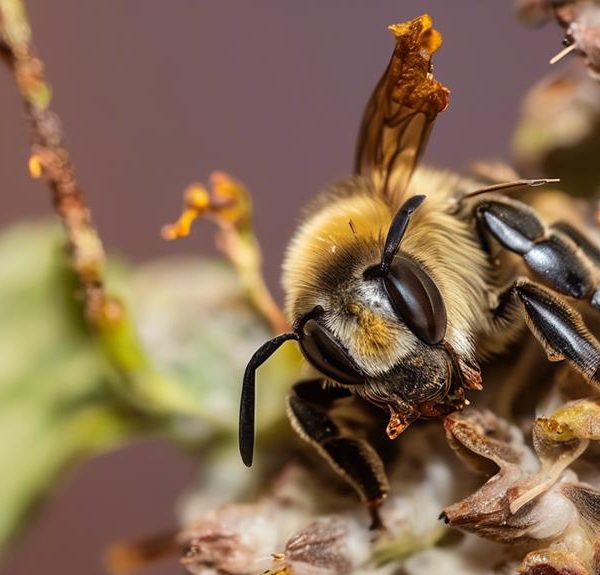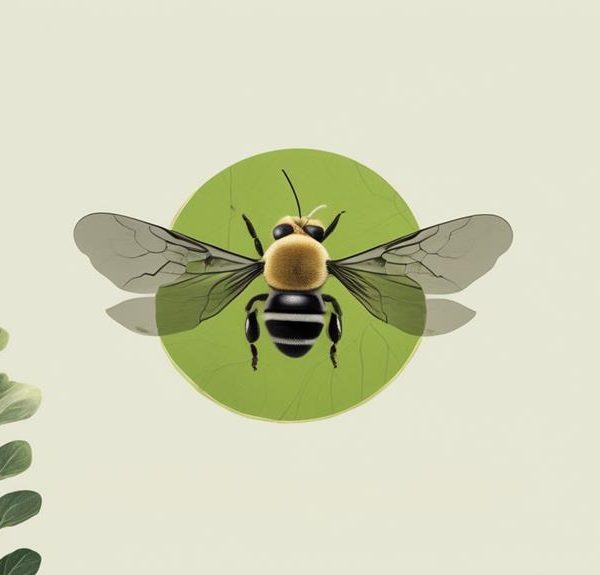Hover into the fascinating world of UK's leaf cutter bees and discover their crucial role in our ecosystem.
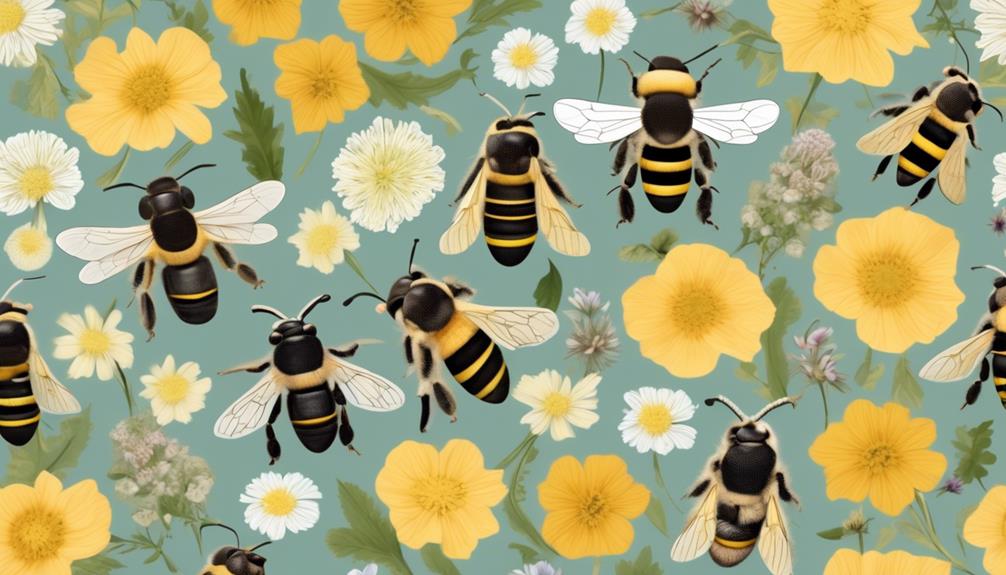
Types of Leaf Cutter Bees UK
Have you ever stopped to ponder the buzzing symphony that accompanies a British summer? Among the orchestrated hum is the unique sound of the leaf cutter bees.
There's more than meets the eye when it comes to these industrious insects, with varieties such as the common Megachile Centuncularis, the artistic Megachile Versicolor, and the somewhat elusive Anthidium Manicatum, also known as the Wool Carder Bee.
You'll be surprised at the crucial role these tiny creatures play in our ecosystem and just how fascinating their behaviour can be.
So, why not learn a bit more about these unsung heroes of the insect world?
Key Takeaways
- Leaf cutter bees in the UK include the common leaf cutter bee (Megachile Centuncularis), the patchwork leaf cutter bee (Megachile Versicolor), and the wool carder bee (Anthidium Manicatum).
- Leaf cutter bees create nests in hollow stems, dead wood, or in the ground, and they use neat circular or oval pieces of leaves to construct their nests.
- The leaf cutting behavior of these bees does not harm plants and actually benefits biodiversity by promoting pollination and maintaining food security.
- Leaf cutter bees play a crucial role in the ecosystem by promoting plant growth, enriching soil fertility, providing essential spaces in the soil, and serving as a food source for bird species.
Understanding Leaf Cutter Bees

To truly understand leaf cutter bees in the UK, you need to delve into their unique biology, their fascinating behaviours, and their crucial ecological roles.
Don't mistake them for your typical honeybees, these bees are solitary creatures with a remarkable lifestyle.
Leaf cutter bees, scientifically known as Megachile species, are recognized by their unique trait of cutting neat semi-circles out of leaves which they use to line their nests. You'll be amazed to learn that their nests are often made in pre-existing holes in wood, rather than the typical hive structure you might associate with bees.
Their biology is as captivating as their behaviour. They're equipped with strong mandibles which they use for their leaf cutting, while their abdomens are covered with specialized hairs for carrying pollen. This adaptation allows them to be more efficient pollinators than some other bee species.
But what's their ecological importance? Well, you mightn't know that these bees play a critical role in pollination, helping maintain biodiversity and contributing to food security. They're also vital in enriching the soil through their nest building.
Common Leaf Cutter Bee: Megachile Centuncularis
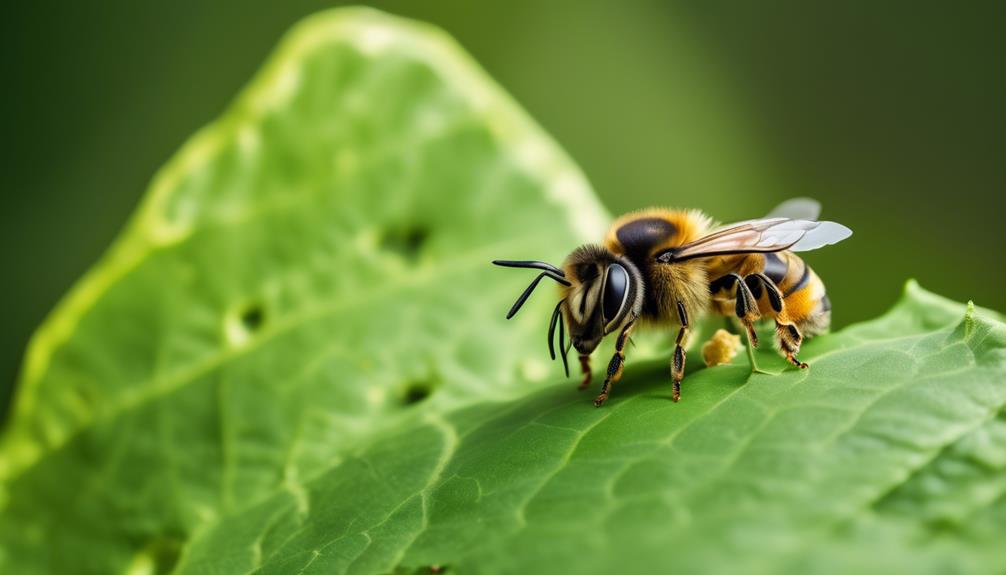
Now that you've got a glimpse into the fascinating world of leaf cutter bees, let's zoom in on one of the most common species found in the UK: the Megachile Centuncularis. Also known as the patchwork leaf-cutter bee, this species is a sight to behold with its oval, dark body and orange-coloured pollen brush on its abdomen.
You'll often spot them buzzing around in your garden during the summer months, particularly from June to August. They're quite industrious, creating nests in various places such as hollow stems, dead wood, or even in the ground.
The females have a fascinating habit of cutting neat circular or oval pieces from leaves. They use these leaf fragments to construct their nests, lining them with multiple leafy cells. Each cell is filled with a mix of nectar and pollen, followed by an egg. When the larvae hatch, they've got a ready-made food supply waiting for them.
Though they may leave your plants looking a bit ragged, you shouldn't worry. Their leaf cutting doesn't harm the plants. In fact, they're beneficial pollinators that play a crucial role in maintaining biodiversity.
The Patchwork Leaf Cutter Bee: Megachile Versicolor

Shifting our focus, let's delve into the intriguing world of the Patchwork Leaf Cutter Bee, or Megachile Versicolor, another prevalent species in the UK that's known for its distinctive, patchwork-style nesting behavior.
This solitary bee is a sight to behold, with its striking black body and orange-tipped abdomen.
Unlike many other bee species that burrow into the ground or wood, the Patchwork Leaf Cutter Bee has a unique nesting habit. It uses its powerful jaws to cut neat circles out of leaves, which it then uses to line its nest. This gives the nest a 'patchwork' appearance, hence its name.
These nests can usually be found in pre-existing holes in wood, or even in the hollow stems of plants. Each cell within the nest is filled with a mix of nectar and pollen, upon which an egg is laid. The cell is then sealed with leaf cuttings, creating a safe space for the larvae to develop.
Despite their solitary nature, these bees are vital pollinators, helping to maintain the balance of our ecosystem.
Discovering Anthidium Manicatum: Wool Carder Bee
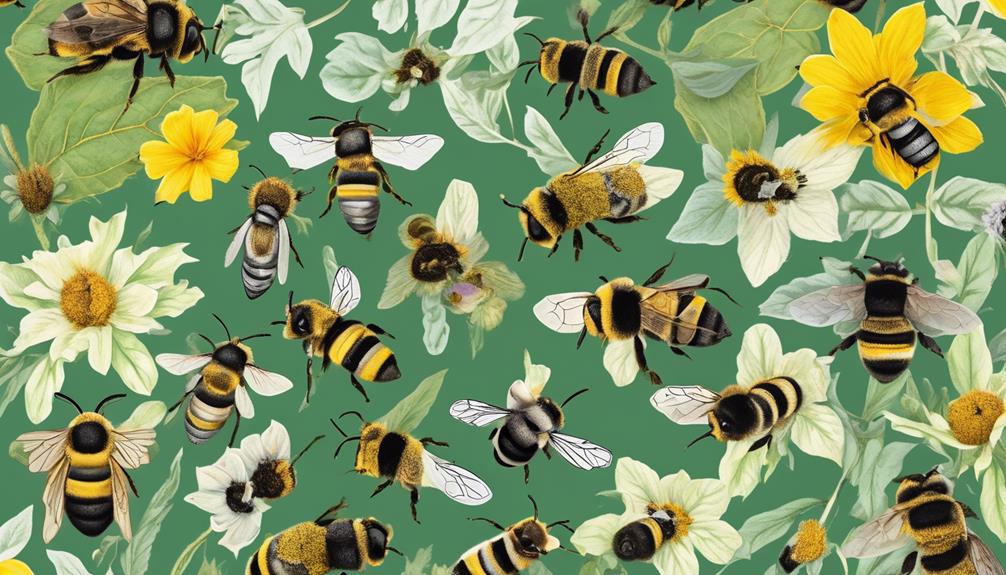
While you may be fascinated by the leaf-cutting habits of the Patchwork Leaf Cutter Bee, there's another intriguing species that's worth your attention: the Anthidium Manicatum, commonly known as the Wool Carder Bee.
This particular bee is quite distinctive, with females often seen scraping fuzzy hairs from plants. These hairs are then used to line their nests, hence the moniker ‘Wool Carder'. A bit more solitary than some of its counterparts, the Wool Carder Bee often sets up its home in pre-existing holes in wood or mortar.
Here's a quick comparison to give you a clearer picture:
Features | Wool Carder Bee |
|---|---|
Length | 11-17mm |
Flight Period | May – September |
Habitat | Gardens, Meadows, Hedgerows |
Nesting | Pre-existing holes |
Behaviour | Solitary |
Another unique characteristic is their aggressive territorial behaviour, especially by males, who are known to guard their patch fiercely against intruders. So, while you're out exploring, don't be surprised if you stumble upon one of these fascinating creatures maintaining a stern vigilance over its territory. With the Wool Carder Bee, there's always something new to discover.
Importance of Leaf Cutter Bees in Ecosystem
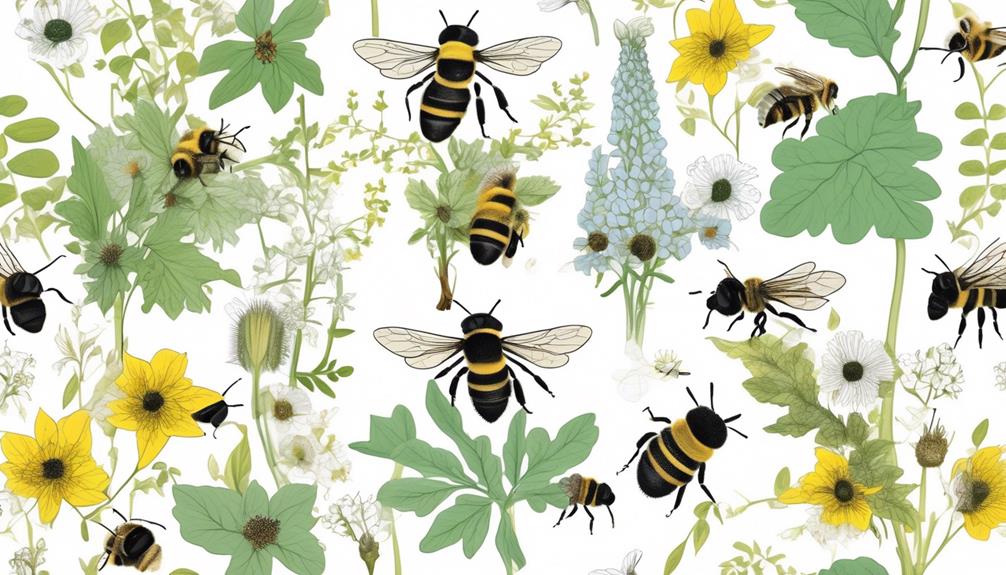
You might wonder why leaf cutter bees hold such a pivotal role in our ecosystem, so let's delve into the intricate ways these industrious insects contribute to biodiversity and plant propagation.
Firstly, leaf cutter bees are crucial pollinators. They've a unique 'buzz' pollination technique where they vibrate their bodies at a high frequency, shaking pollen loose from flowers. This method is highly efficient and encourages the growth of various plant species, increasing biodiversity.
Additionally, they're exceptional nest builders, using leaf pieces to construct their homes. These nests provide essential organic material to the soil, enhancing its fertility and promoting plant growth. Furthermore, their nesting habits also create spaces in the soil, improving its structure and water-holding capacity.
In the grand scheme of things, leaf cutter bees are a vital link in the food chain. They serve as a food source for many bird species, contributing to the ecological balance.
Without leaf cutter bees, the health of our ecosystem could be severely compromised. Therefore, it's of utmost importance that we strive to protect and preserve these humble pollinators. Their presence, though often overlooked, has far-reaching implications for the health and vitality of our natural world.
Conclusion
In conclusion, you've learned about the common Leaf Cutter Bee, the Patchwork Leaf Cutter Bee, and the Wool Carder Bee, each with unique characteristics and roles.
These bees play a vital part in our ecosystem, from pollinating our plants to enriching our soil.
Understanding and appreciating their existence, you can contribute to their conservation. Remember, it's not just about the honey; it's about the harmony of nature that these little creatures help maintain.

